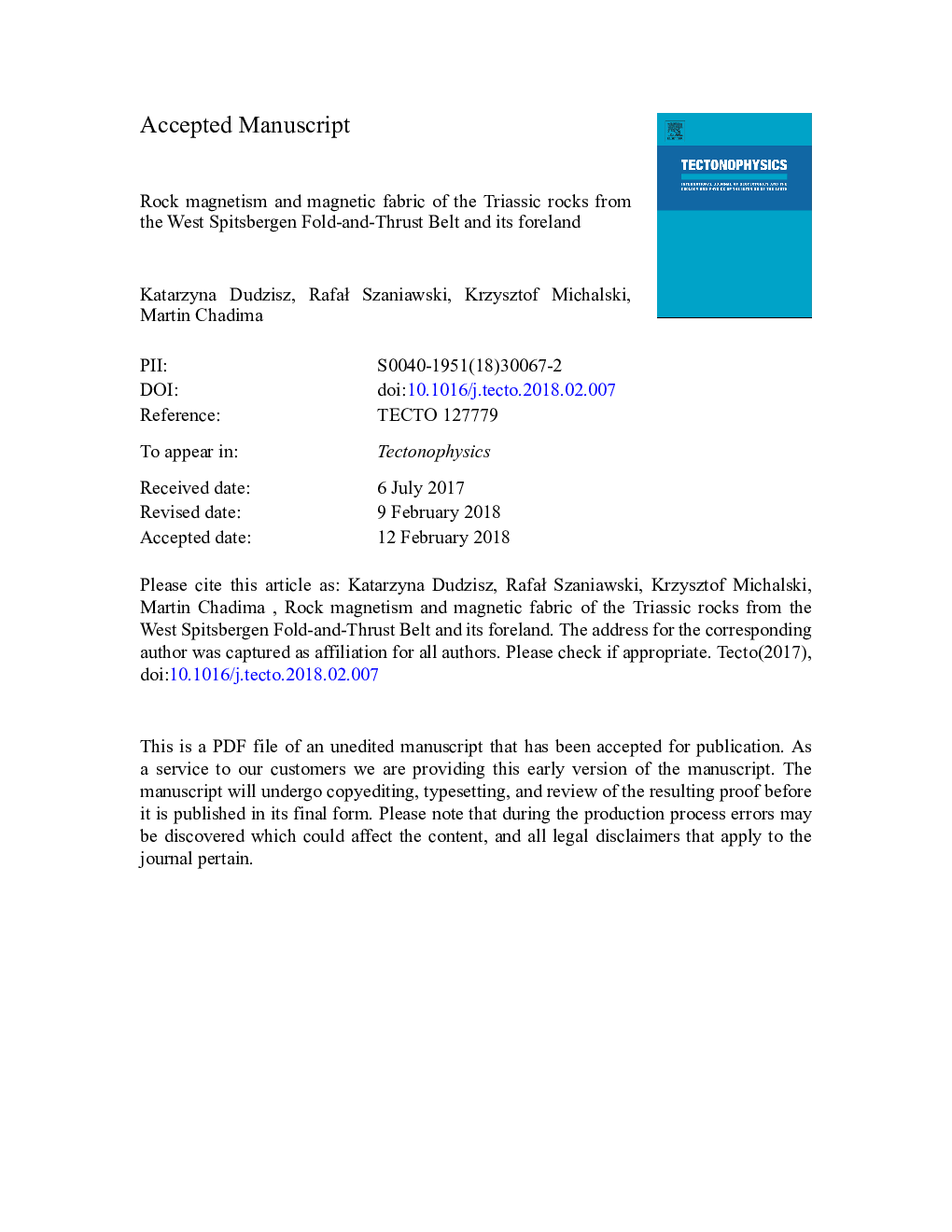| Article ID | Journal | Published Year | Pages | File Type |
|---|---|---|---|---|
| 8908738 | Tectonophysics | 2018 | 59 Pages |
Abstract
Magnetic fabric and magnetomineralogy of the Early Triassic sedimentary rocks, collected along the length of the West Spitsbergen Fold-and-Thrust Belt (WSFTB) and from subhorizontal beds on its foreland, is presented with the aim to compare magnetic mineralogy of these areas, determine the carriers of magnetic fabric and identify tectonic deformation reflected in the magnetic fabric. Magnetic mineralogy varies and only in part depends on the lithology. The magnetic fabric at all sampling sites is controlled by paramagnetic minerals (phyllosilicates and Fe-carbonates). In the fold belt, it reflects the low degree of deformation in a compressional setting with magnetic lineation parallel to fold axis (NW-SE). This is consistent with pure orthogonal compression model of the WSFTB formation, but it also agrees with decoupling model. Inverse fabric, observed in few sites, is carried by Fe-rich carbonates. In the WSFTB foreland, magnetic lineation reflects the Triassic paleocurrent direction (NE-SW). The alternation between normal and inverse magnetic fabric within the stratigraphic profile could be related to sedimentary cycles.
Related Topics
Physical Sciences and Engineering
Earth and Planetary Sciences
Earth-Surface Processes
Authors
Katarzyna Dudzisz, RafaÅ Szaniawski, Krzysztof Michalski, Martin Chadima,
